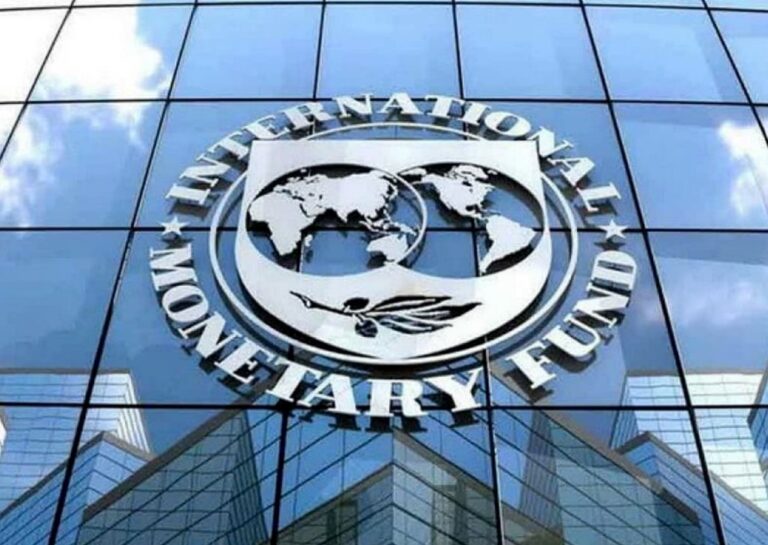Have you ever wondered what the International Monetary Fund (IMF) is and why it exists? The IMF is an international organization that works to promote global economic stability and reduce poverty around the world. It has a long history, dating back to the aftermath of World War II when it was created in 1945.
In this guide, we’ll explore the history of the IMF and its current structure, objectives, and functions. We’ll also provide an overview of how it operates in the modern world. Keep reading to find out all there is to know about the International Monetary Fund.
Table of Contents
International Monetary Fund (IMF): what is it
The International Monetary Fund (IMF) is a global organization that works to promote economic stability and international cooperation. Established in 1945, the IMF’s main objective is to ensure that countries can maintain the value of their currencies in relation to one another. It also reduces poverty, fosters economic growth, and creates financial stability.
The IMF works with developing and developed countries alike, providing advice, training, loans, and other forms of assistance. By helping governments manage their economies better, they are also able to promote investment in their countries.
History of the International Monetary Fund (IMF)
The International Monetary Fund (IMF) as an international organization was established in 1945 with the aim of promoting global economic stability and monetary cooperation. It works to ensure that countries adhere to policies that promote balanced and sustainable economic growth. Through its lending programs, technical assistance, monitoring of economies, and research, the IMF helps its 189 member countries to address economic challenges and opportunities.
The IMF’s history can be divided into four phases: the founding years (1945-1956); the Bretton Woods era (1957-1973); the global financial crisis and its aftermath (1974-2010); and the current period of reform and reinvention (2011 to present).
The founding years were marked by the establishment of the IMF in 1945, with 29 founding members. The Bretton Woods era saw a period of expansion as new member nations joined and the institution adapted to an increasingly global economy. During this time, it began offering loans to countries experiencing balance-of-payments problems and oversaw major international currency arrangements.
The global financial crisis and its aftermath saw the IMF become more actively involved in helping countries manage their fiscal policies, promote financial stability, and combat money laundering. It also established a regional technical assistance center to help low-income countries strengthen their economic management and institutions.
In the current period of reform and reinvention, the IMF has focused on building a more inclusive and resilient global economy. It has introduced reforms to its lending program, including working with countries to develop debt sustainability frameworks and supporting greater access to global capital markets. It is also taking a stronger role in monitoring economies, providing technical assistance and capacity building, conducting research and analysis, and promoting financial inclusion.
Read also: Global cryptocurrency regulatory framework: FSB, IMF and BIS lay the groundwork for common rules
Structure of the International Monetary Fund
The International Monetary Fund (IMF) is one of the most important institutions in the world. It serves as a global financial system to facilitate international trade, secure currencies, and promote economic stability. Structurally, it consists of several components that provide expertise, guidance, and resources necessary for its operations.
The IMF is governed by a 24-member Executive Board that is elected by the 189 member countries. It holds the responsibility for setting policies, approving decisions, and overseeing operations.
The Board of Governors is composed of one representative from each member country and is primarily responsible for appointing the Executive Board members. The day-to-day activities of the IMF are managed by the Managing Director, who is appointed by the Executive Board. The Managing Director is assisted in his role by a team of senior advisors and other staff members.
The IMF also has several advisory bodies that provide expertise on specific topics. These include an Advisory Committee on International Monetary Reform, Economic Policies and Research, an Advisory Committee on Regional Development, an International Financial Statistics and Data Management Advisory Committee, and a technical assistance committee.
The IMF’s operations are also supported by various departments, including Fiscal Affairs, Monetary and Capital Markets, and Research Departments. These focus on providing analysis of economic trends, financial sector policies, and sound macroeconomic practices.
Functions of the International Monetary Fund
Since its inception, the IMF has played a critical role in helping countries manage their international payment systems, access financing during crises, and, more recently, promote financial inclusion. It has also helped countries tackle high inflation and foreign exchange rate problems; strengthen their banking systems; increase transparency in their economies; and combat corruption. Let’s explore the functions of the International Monetary Fund in detail.
1. Maintaining exchange stability
The IMF works to stabilize foreign exchange rates by providing loans and reserves to countries facing economic difficulties so they can maintain their currency’s value in relation to other currencies. This helps make international trade easier and prevents large fluctuations in currency values.
2. Determining the par value
The IMF also sets an official exchange rate (par value) for each member country’s currency based on the market rate in effect at the time of joining the organization. This is done to create a common reference point and make comparisons between countries easier.
3. Eliminating BOP disequilibrium
The IMF works to eliminate the balance of payments (BOP) disequilibrium. This involves analyzing a country’s trade and capital flows, providing advice on adjusting its currency or fiscal policies and offering to finance if needed.
4. Providing credit facilities
The IMF provides credit facilities to assist countries in the short term, either through direct loans or by guaranteeing other types of financing. This helps countries manage their foreign exchange reserves and provides a source of funds during times of crisis or economic instability.
5. Stabilising economies
The IMF helps promote global economic stability. It does so by providing advice on how countries can adjust their fiscal policies to achieve long-term economic stability. This includes providing technical assistance and policy advice on taxation, budgeting, and financial market regulation issues.
6. Maintaining liquidity
The IMF also works to maintain liquidity in the global economy. It does so by helping countries manage their foreign exchange reserves so that they can meet their short-term financing needs.
7. Reducing tariffs
Finally, the IMF promotes free trade by advising countries to lower their tariffs and other barriers to international trade. This helps increase global economic activity and promote free trade between countries.
Besides, the IMF plays a critical role in helping countries manage their economies, maintain financial stability, and reduce poverty. The IMF helps ensure global economic stability by providing advice and financing and encourages free trade between countries. This ultimately leads to greater prosperity for all.












